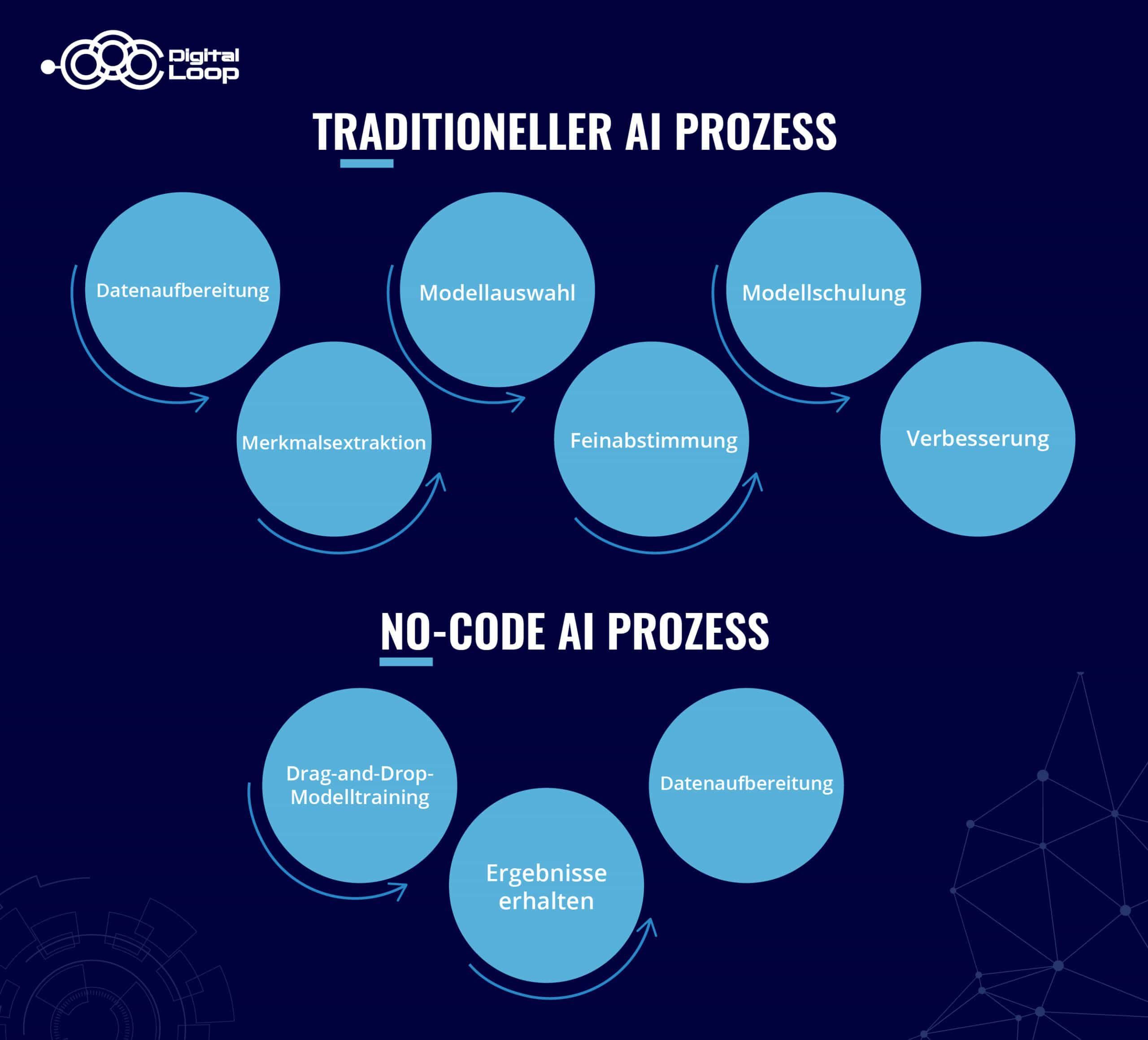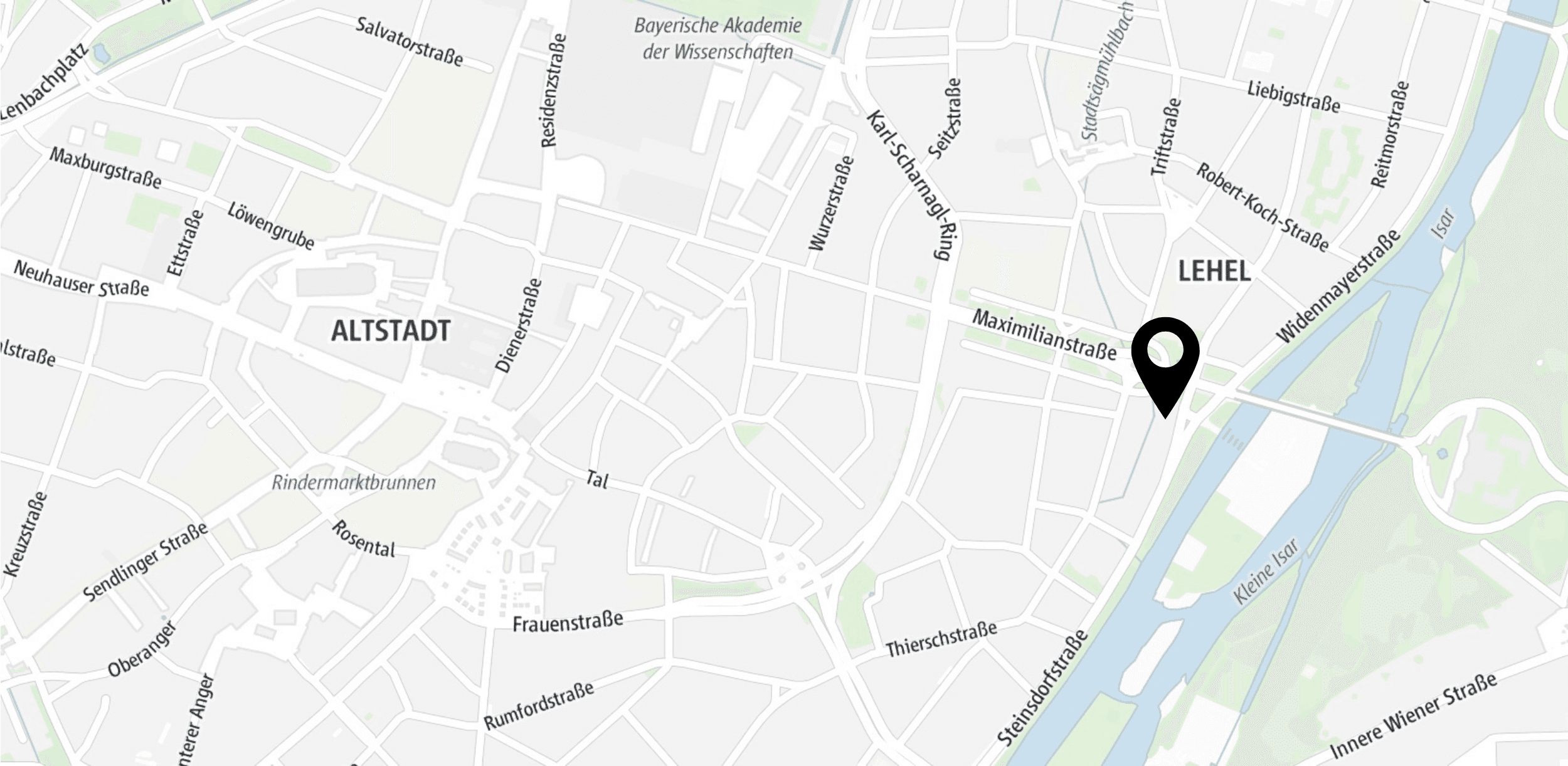A lot has happened in software development in recent years. When developing software, software manufacturers also consider the prior knowledge of the respective users. To enable as many users as possible to use the manufacturer's programs, more and more no-code and low-code platforms are being developed. Today, they are one of the biggest martech trends of all. The Chief Marketing Technologist Scott Brinker describes the increasing number of users without prior in-depth knowledge as “Citizen Creators”.
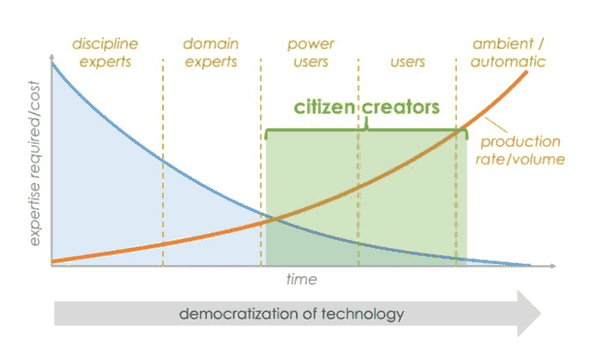
No-code tools enable people to develop technical applications, from websites and databases to apps and chatbots, without prior programming knowledge. Development work experienced programmers used to do in the past can now be done faster and in a simplified manner by persons without specialized knowledge. Although arduous programming tasks have been eliminated, basic understanding of technical processes is required.
So this means that the no-code solution is not not limited to the IT sector however, because also sectors with less specialized knowledge in programming are able to use these solutions. Professionals in a wide variety of areas, such as web design and sound engineering, are able to obtain the same results without the necessary specialist knowledge.
What is the difference between low-code and no-code?
No-code solutions refer to simple but functional applications that can be developed using “drag and drop” functions with no-code tools. These are often however not scalable and have limited integration capabilities, according to Sorin Muntean. As such, no-code tools are particularly worthwhile when specific applications need to be developed quickly and there is no time or money to fall back on the services of experienced programmers.
“Be mindful however, when no-code tools get quick results, there is a catch. If you do work without extensive programming, applications are much more prone to security attacks and often do not comply with data protection regulations.”, according to John Munoz, CEO of Digital Loop.
Another item to be mindful of, is the fact that personalization options are often very limited. It means you have to “make do” with the available themes. This can be a big draw-back for companies looking to implement their own corporate identity (“CI”) or looking to optimize the user experience (“UX”).
In contrast to no-code solutions, low-code solutions, as the name suggests, do require some programming effort and knowledge. In addition to the “drag and drop” option, low-code solutions offer independent adjustments to the code and work more efficiently.
Applications can be developed faster and can therefore be tested by the various stakeholders during all development phases. Both platform solutions focus particularly on visualization during application development to reach as many users as possible. No-code and low-code tools increase efficiency and productivity in the various business processes, as the conventional approach is often very time-consuming and cost-intensive.
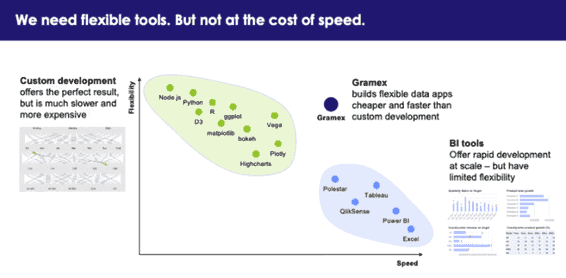
Many no-code vendors fantasize about the influential future of no-code in application development. However, there are essential reasons why low-code providers offer the option of adding your own code. But no-code platforms also serve a purpose. Small companies with little budget and without extensive IT knowledge can implement simple applications thanks to no-code solutions.
“Sooner or later, however, companies have to switch to low-code platforms to meet all legal and user-oriented requirements”, says John Munoz, CEO of Digital Loop and MarTech Specialist.
.dd7aeb0e.png)
No- / Low-Code-Platforms in App Development
In tough competition, efficiency and process optimization are one of the most important tools to stand out from the competition. Since new applications are constantly being developed and the competition never sleeps, it is important to launch new applications as quickly as possible. Low-code platforms can significantly accelerate the development of new applications and make them more efficient. With low-code platforms, the productivity of developers can be increased given the visual user interface component.
By automating simpler programming tasks, full-stack developers can therefore devote more time to tackle more complex tasks. Low-code platforms enable the development of complex applications with little programming effort. Many components are required in traditional app development, such as an integrated development environment (IDE), data storage, APIs and frameworks. In order to ensure the functioning of these components, issues such as problem tracking, monitoring, security have to be considered. Low-Code App Development Platforms (LADP) combine these factors in one system. For example, low-code can be used to develop most of a particular system — its core functionality. And programming teams can be brought in later to develop its more complex, bespoke functions.
This means that developers can mainly use the visual user interface for application development. According to Gartner, the use of low-code applications in application development will account for more than 65%.
By talking about no-code in app development, it seems to be very promising. No-code application platforms are part of the LCAP (Enterprise Low-code application platforms) market. The title "No Code" implies that the platform only requires text input for formulas or simple expressions. All other aspects of application development are made possible by visual modelling or configuration. This particular sub-area of LCAP is also referred to as Citizen Development. Gartner market researchers assume that by 2024 two thirds of all applications will be created with low-code or no-code tools. In this way, the small projects - “not business critical” - become the engine of digitization in organizations.
One of these no-code Applications for example is “smapOne”. It allows to build apps without any programming experience. The app construction kit is the heart of the no-code platform. You can easily create your own business apps in just 30 minutes - without any programming knowledge. Resourceful, committed employees from specialist departments (citizen developers) are able to digitize their everyday processes themselves with smapOne's no-code tool.
Another example for a no-code application is Adalo. Adalo is a great platform for creating simple applications, especially mobile apps, quickly and easily. It keeps things simple by limiting functionality to what most users need, and supports enough integrations to get most applications up and running quickly. The ability to publish directly in the Apple App Store and Google Play Store is a big plus. It is very easy to use and especially for small and medium businesses, startups, freelancers and individuals.
Also apps that use low-code are very useful. An example for a low-code app is Pega. With its intuitive, integrative app authoring, Pega ensures that cross-team collaboration runs smoothly. Also it makes it possible to drive innovation and manage low-code company-wide from a comprehensive dashboard.
No- / Low-Code-Platforms in Machine Learning
AI and machine learning have now largely arrived in all corporate sectors and are indispensable. For the development of smart software solutions, the algorithm must be trained over a longer period of time before the deployment. This is associated with a considerable expense in terms of time and money. New low-code platforms for machine learning are helping data scientists to deliver solutions quickly by combining simple components and microservices.
Programming-heavy software solutions are often more prone to bugs and programming errors. In machine learning, there is often recurring code when developing algorithms. Low-code platforms for machine learning create components, templates, and microservices that replace repetitive code structures. This reduces the load on the algorithms. Low-code platforms can never completely replace handwritten algorithms. However, you can support individual developers in developing algorithms with ML building blocks to accelerate the creation of prototypes. The knowledge of experienced experts in the fields of data science, AI, and machine learning is still essential, as algorithms remain a complex matter.
How ML low-code and no-code Platform can be a powerful tool-set for Marketing Managers
With machine learning, marketing can reach a whole new level of personalization and customer satisfaction. But that only works if marketers are able to identify the right solutions for themselves and feed them with the right data.
No-code machine learning is beneficial for marketing teams who want to avoid turning to the data science team for repetitive predictive models. Also, autonomous marketing analysts who want to make predictions and share them with their larger team can make better decisions. Project managers who want to make their project AI-driven without needing a data science team or technical knowledge are also forced to use machine learning without code.
Low-code machine learning allows development to be done in a democratized way, allowing the rapid deployment of a customized tool designed directly by a marketer, keyed to the needs of the consumer, according to Ben Smith, senior development consultant at Quandary Consulting Group.
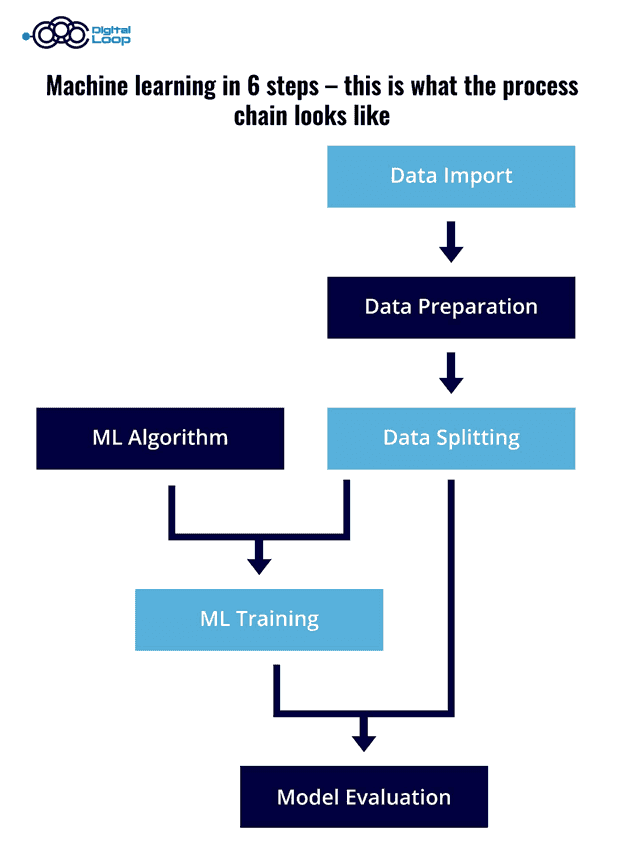
AutoML or BigML for Customer Segmentation
AutoML is the process of automating the process of applying machine learning to real problems. It covers the complete pipeline from the raw data set to the deliverable model for machine learning. BigML is a machine learning platform that includes tools for automating and managing machine learning.
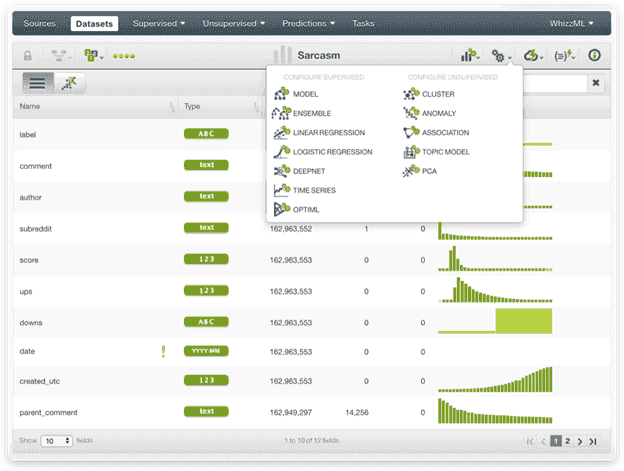
Vertex AI (Google Cloud) for Attribution Models
Vertex AI is a Google Cloud Service. It brings AutoML and AI Platform together into a unified API, client library and user interface. It helps you to build, deploy, and scale ML models faster, with pre-trained and custom tooling within a unified AI platform. It's the perfect tool for Marketers for Attribution models.

App Creation with AppSheet
AppSheet made it possible to be flexible in app creation instead of being bound by a specification from the start. With AppSheet, you are able to change, customize, and act on user feedback while adding new features to improve the user experience.
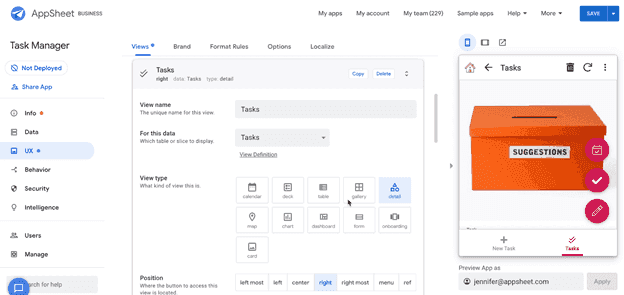
.add1f408.png)
Chatbot with Dialog Flow
Dialogflow is a lifelike conversational AI with state-of-the-art virtual agents. It offers a more natural customer experience with virtual agents supporting multi-branch conversations with complementary questions based on the deep learning technologies that power the Google Assistant.
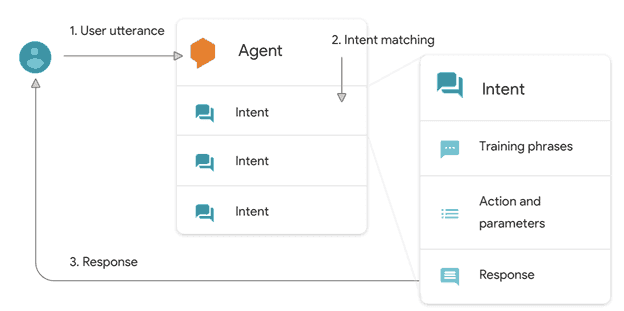
These are popular ML and App Platforms to create no-code or low-code applications:
Machine Learning Platforms:
- Amazon SageMaker
- Azure ML Studio
- Azure ML Services
- Google Cloud AI Platform (Vertex AI)
- BigML
Apps:
- Zoho Schöpfer
- Knack
- Mendix
- Quickbase
Summary
As shown in this article, low-code and no-code both have their benefits. It depends on the goal you want to achieve by using these two options. The market prospects for low-code and no-code platforms are very good: Around 65 percent of all applications will be created on this basis by 2024. For the same period of time, the experts predict that at least four different low-code development tools will be used in large companies.
The platforms also benefit from the unchanged lack of developers in almost every industry. Since the low-code and no-code systems combine experienced software developers and so-called citizen developers, the shortage of skilled workers is somewhat alleviated. Gartner expects that in the future at least a quarter of all business applications will be created directly by Citizen Developers.
“Low- and No-Code Platforms are powerful tools for Digital Marketers to create without developing skills prototypes of applications and to make use of AI in their Marketing strategies”
This article was originally published on LXAhub.com.

